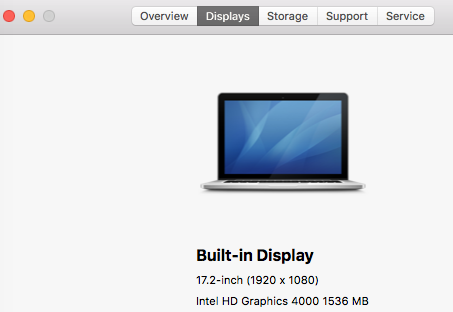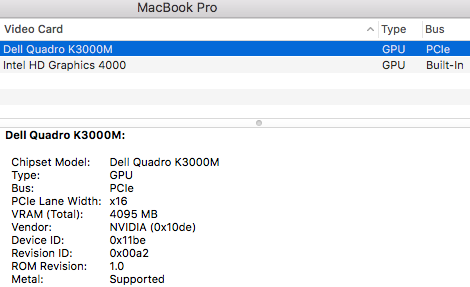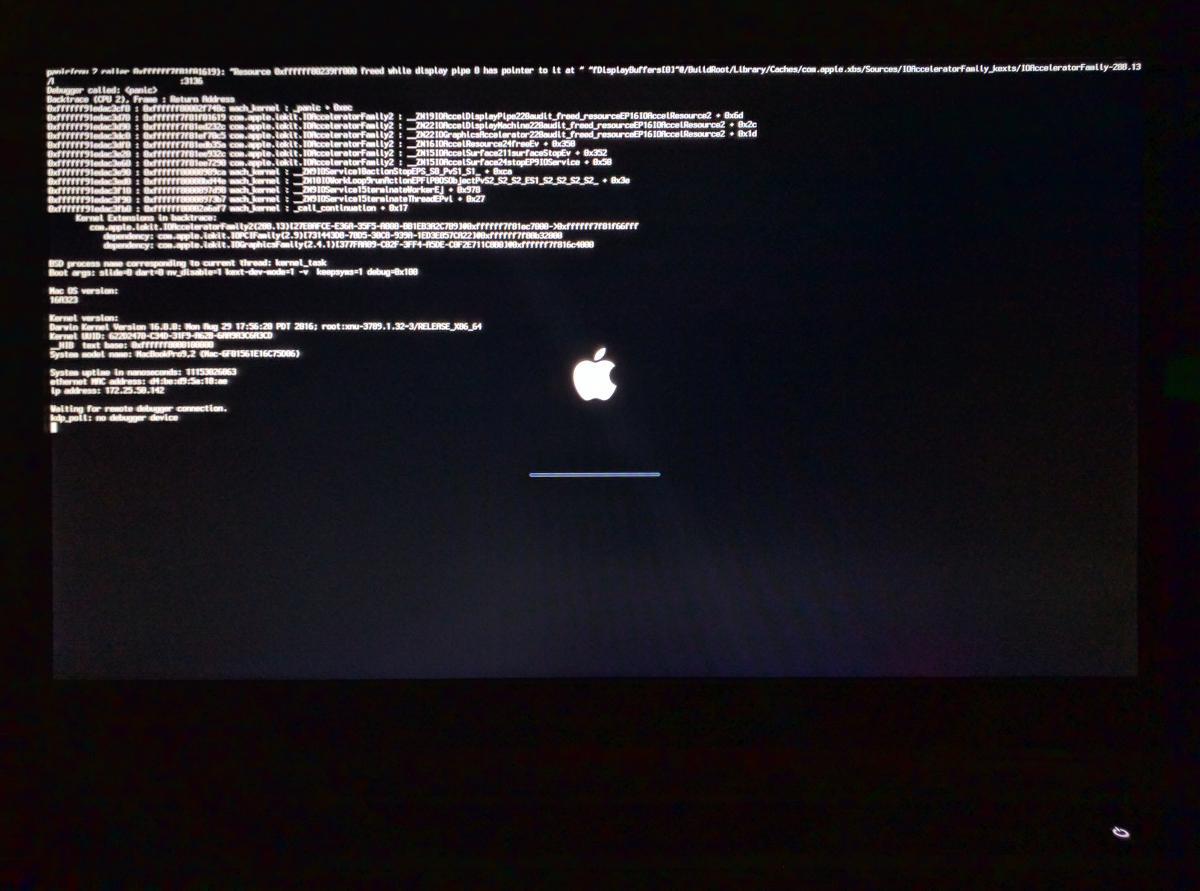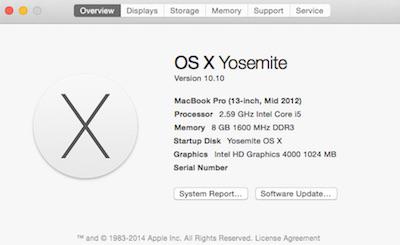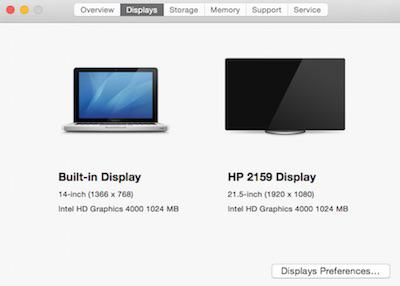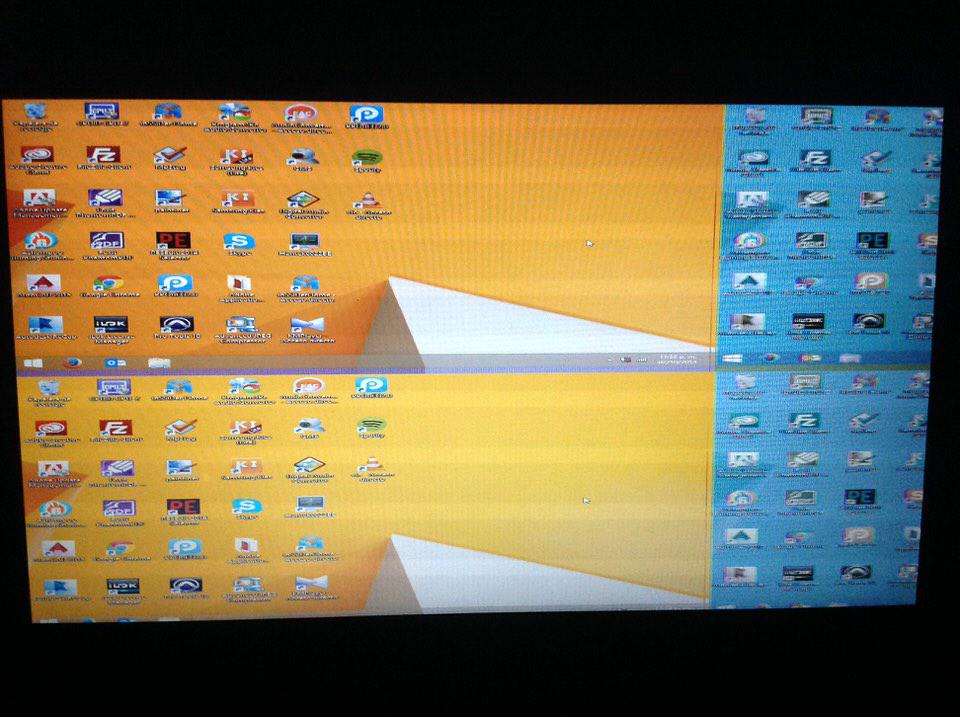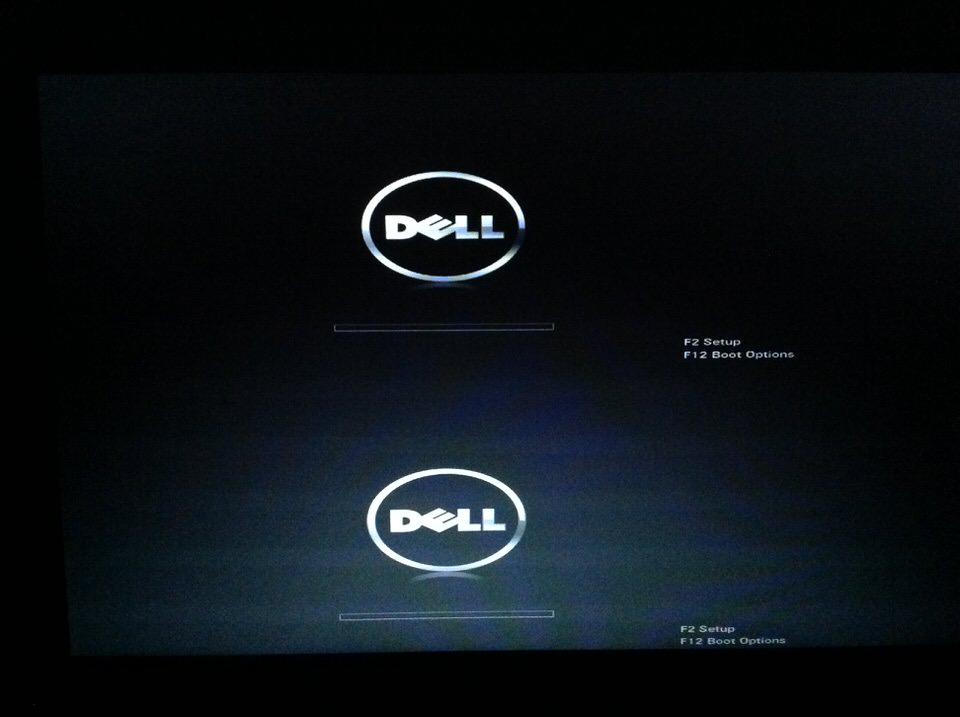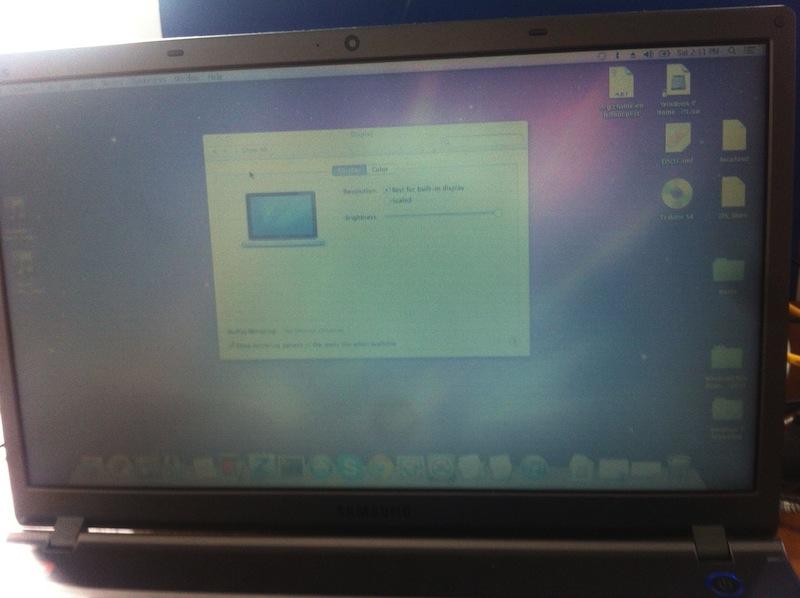Search the Community
Showing results for tags 'HD4000'.
-
Hi folks, I would like to use my quadro graphics card for the built-in display. Currently, the built-in is driven by HD4000. Last time I checked the quadro is active and working for an external monitor connected to HDMI port. Is that even possible to run the built-in display thru k3000m on my hack? Thanks for your help. PS: Optimus is enabled in Bios. VT is disabled in Bios. My config.plist has active Inject NVidia, 0x01660004 for ig-platform-id and 4 for Video Ports. Currently on my m6700:
-
Hello, I am trying to get 2 external Monitors to work with the 6430s (HD4000 based, Single INTEL GPU, 1366x768) and a Dell PR03X docking station. I have one external Monitor working flawlessly via DVI. Would be nice if someone could point me in the right direction, what would be the best / easiest solution? Should I try tho get one of the two DVI / Display Ports working? VGA (on laptop or dockingstation?? I read that patching the AppleIntelSNBGraphicsFB.kext could enable VGA...) HDMI (on Laptop, does it even work when plugged in dockingstation?? LAN Plug right to it does not...) I have tried to fiddle around with the on-the-fly kext patching the AppleIntelSNBGraphicsFB in Clover Configurator, but no luck so far.
- 2 replies
-
- 6430s
- 2 external Monitors
-
(and 1 more)
Tagged with:
-
I'm doing a fresh installation on a Dell Latitude E6530, Core i5-3320M, 15.6" HD4000 1920x1080, 16GB RAM, 500GB SSD. Not seeing any Sierra guides, I followed along with this El Capitan thread, using the E6430 bootpack as that seemed closest, and updating the VoodooPS2Keyboard.kext. All went well during the installation and first boot, but after I installed Clover to the SSD and rebooted, this was the result: There is a larger and more readable version of this image. This occurs whether I try booting from the hard drive or the USB install media. It boots up in safe mode, but the video is so slow as to be nearly unusable. I've tried a couple of things to try to isolate the problem: I removed the generated ACPI/patched/ssdt.aml, which had no effect. I tried to remove the Boot Graphics Glitch - 10.11 patch from config.plist. This allowed the system to boot, but the graphical glitches were there. It looked like sections of random snow all over the screen. I suspect that this patch needs to be updated for Sierra. (I then added it back in.) At this point I am open to suggestions. efi.zip
-
Hi I'm new on installing OS X on Dell Laptops. I followed all Jake Lo's Guide to install Yosemite OS X 10.10 on my E6430 A12 with i5-3320M 2.6 GHz and Intel HD4000 https://osxlatitude.com/index.php?/topic/7478-dell-latitude-yosemite-install-guide/ Everything is working according the guide above but the wifi, but that's ok since I'm using the default one. Before I tried several other options and some components were not working, however at the end I always ended with the same problem: Screen artifacts when HD 4000 was enabled. I uploaded a video showing these moving artifacts (sorry for the file size). I have an external HDMI monitor 1080p working with sound and no artifacts or any problems at all. The built-in display on the laptop is always showing these moving artifacts and lines. I really appreciate any help please. Thanks in advance E6430 A12 i5 3320M 2.6 GHz 8 GB RAM Regards Alex IMG_5568.MOV DSDT_ssdt_boot_smbios.zip
-
Has anyone successfully gotten 10.8 installed and working on an e6430 with the optimus video (nvidia/intel)? I can get it installed but I'm unable to find any sort of combination of drivers to be able to boot without turning on safe mode. I know the EDP has the e6430 in there, but I dont think you can successfully install EDP while in safe mode. Just curious if anyone else out there has had any success with this model latitude. Any help is greatly appreciated. My model specs: i7 Quad CPU Optimus video (nvs5200m/intel hd 4000) 16gb ram Dell wireless 240gb ssd
-
My situation is really strange. I installed Windows 8.1 and Mavericks in one hard disk drive with three partitions, one for each operating system and one just for storage purpose. Since my wireless network card (BCM943142HM) is not usable in OS X, I bought a USB Wifi Adapter (TP-LINK TL-WN725N) so that I could access internet. But when I use a lot of internet bandwidth (downloading torrents) the computer freezes completely. So I decided to work heavy internet use in Windows and just specific tasks on OS X. I’ve been using my computer in this way for almost 8 months without any additional issues. But recently I found somewhere that in order to stop the random freezes caused by the high internet’s bandwidth use, I had to disable Spotlight. So I did it, but the freezes continued. However I noticed that I could use the computer for a longer period of time before it froze again. So here is the problem. Yesterday, after some of this freezes I restarted the computer and now it beeps 8 times while booting indicating a display problem according to Dell, and the display shows up like this while booting and in Windows: But inside OS X the screen turns off. When I perform the display test according to Dell (holding down the D key and then pressing the Power button to turn on the computer) it shows solid colours indicating that the display panel is working correctly. Right now I’m using an external monitor connected to the HDMI port which is working correctly in both operating systems. Inside OS X it’s like there is no display panel connected to the graphics adapter, and in Windows it detects the display panel as a generic monitor. I’m really concerned about this. I know this is not a common problem, so I would appreciate any help!
- 14 replies
-
- Display
- Graphics Adapter
-
(and 7 more)
Tagged with:
-
My Laptop is HP DV6-7023tx specifications are below My problem is I cannot enable HD4000 I have to give boot arg Graphicsenabler=No and IGPenabler=Yes unless the screen is going dark.Can enyone please help me? thanks in advance. I'm very sorry for my bad English. Im a Sri Lankan. Specs: Microprocessor 2.3 GHz Intel Core i7-3610QM Microprocessor Cache 6 MB L3 Cache Memory 16 GB 1366 MHz DDR3 Memory Max 2 user accessible slots Video Graphics NVIDIA GeForce GT 630M Video Memory 2 GB DDR3 dedicated Hard Drive 750 GB SATA (5400 rpm) Multimedia Drive Blu ray Drive Display 15.6" diagonal HD BrightView LED-backlit Display (1366 x 768) Network Card Integrated 10/100/1000 Gigabit Ethernet LAN (RJ-45 connector) Wireless Connectivity 802.11b/g/n Bluetooth Sound 4 x Beats Audio Internal speakers Beats Audio Audio playback HP Triple Bass Reflex Subwoofer Keyboard Full-sized island-style keyboard with integrated numeric keypad Pointing Device TouchPad with on/off button and support for multitouch gestures PC Card Slots Multi-Format Digital Media Card Reader for Secure Digital cards & Multimedia cards External Ports 3 SuperSpeed USB 3.0 1 USB 2.0 1 HDMI 1 VGA 1 RJ45 1 Headphone-out 1 Microphone-in Dimensions 37.8 x 24.7 x 3.25 cm Weight Starting at 2.57 kg Security HP SimplePass Fingerprint Reader Kensington MicroSaver lock slot Power-on password Accepts 3rd party security lock devices Power 120W slim AC Power Adapter 6-cell Lithium-Ion (Li-Ion) ID Mech Description HP TrueVision HD Webcam with integrated dual array digital microphone (High Definition low-light) Im attaching dsdt file that extarted from AIDA64 in windows 7 acpi_dsdt.rar
- 5 replies
-
- HD4000
- DualGraphics
-
(and 1 more)
Tagged with:
-
Hello everyone, I am writing these lines because I have a serious installation problem on my brand new Asus Ultrabook- The model in question is the Asus F550C. The configuration is the following: Intel i5 Video Card: Intel HD4000 + Nvidia GT72M DDR3 RAM 1600MHZ Every time I try, it crashes after the procedure and the Apple logo ever seen the monitro turns black. How can I do? I've tried various tricks with type-x-s-f etc etc I await news THANK YOU
-
First post, long time wannabe hackintosher. Recently I've picked up a Samsung NP900X4D-A03CA laptop, which looks promisingly similar to the NP900X4C/X3C models. i5-3317U and similar (if not same?) BIOS's. First, I'd like to take time in advance to thank anyone willing to lend a hand Second, I've done a hackintosh install before using Hazard's Intel/AMD SSE2/3 distrobution, and although it wasn't pretty, I managed to hack away at it until it was fully functioning on an AMD Athlon II X2 240 processor. Fun times. Third, I'm definitely willing to provide logs, DSDT's, SSDT's, etc, etc. with a little guidance. No, there's not a working anything installation as I'm trying to make this soley an OSX machine, but I can definitely hop into a bootable Linux distribution of anyone's choosing should it assist us in pulling DSDT's or other ACPI data from the mobo. So, without further ado, here's the specs: Problem I've having is getting it to boot without the black screen Intel HD4000 problem. Here's what I've tried so far: Originally I started with Niresh's 10.9.2 customized ISO meant for both Intel and AMD systems, and it worked OK for the installation part. No boot flags required immediately from the get go, just pop the DVD into my external USB DVD Drive, USB 2 or 3 port works fine, boot up, install with default options. The problem is upon reboot, it hangs unless I use the GraphicsEnabler=No flag, and then it doesn't hang, but gets stuck at a black screen, probably trying to display over the micro-HDMI port. (I have ordered a micro-HDMI to HDMI adapter to help troubleshoot this.) I went back at least 8 times, selecting different SMBIOS.plist files, none of which helped in any way, and eventually booted into single user mode -s and was able to run their grafix backup all script to clean all the Intel kext files out. After that, I managed to get it to boot and login, although I had to do so as root because it skipped the initial setup screen...? Anywho, since then I attempted to use EDP, which failed because of other kexts already loaded from Niresh's, so I figured as I have a half-baked install, why not use it to download legit Mavericks and run myHack? Plug in USB for formatting, kernel panic! Needless to say, I ended up creating a myHack USB Installer at work on their Mac's, and used the NP900X4C compatibility pack from OSXLatitude, including your handy guide. Problem there is the installer would also boot to a black screen unless I used -x safe mode flag. (Yes, I did try the GraphicsEnabler=No/Yes and the IGPEnabler=No/Yes flags just for the giggles, neither of which helped.) I went ahead and installed it from -x safe mode flag boot, and selected the "/Extra" Kexts folder bootpack for the NP900X4C but upon reboot, it would start up, seem normal in verbose mode (no abnormal errors) until Mr. DSMOS arrives which is when it finishes booting and bingo bango! Black Screen. I have also tried the IGPlatformId=xxxxxxxx and IGPEnabler=Yes flags, they're not seeming to do anything different. I seem to be in the same pickle as this guy's thread and would love any assistance or insight's into my sillyness. According to the information @Stanislav was able to provide, the Samsung 900X3C/900X3D/900X4C/900X4D models all share the same motherboard, so technically speaking they should all be able to use the same bookpack or DSDT files, yes? (assuming the processors are all i5-3317U's as well) Anywho, I'll await patiently and see if we get anywhere, and do have Mac's at work I can use to keep making hackintosh installation USB's. Many thanks, Erik
-
I have a very strange problem, my system freeze randomly. I have an asus ux31a and use the @darkera13 files UX31A.zip (this file have dsdt/ssdt kext and clover), but in my system not work well... Bios version 219 (with pmpatch) Full HD screen i7-3517u HD 4000 I try with other kext and other bootloader (chameleon and clover), but have he same result. I have only this problem on mavericks, on mountain lion not have this screen issue. Someone can help me?, please.
-
Hi everyone I have a difficulty in HD4000. I searched many times, many keywords, and I wrote others forum about my problem but I can't solve my problem for 2-3 weeks. My laptop is using Clover UEFI If ig-platform-id is 01660003, hdmi is working but internal screen is tinted (dim? foggy? cloudy?) like this picture but interesting, I can control backlight brightness and working sleep. (so I think My laptop may use 01660003, only have to solve tinted screen) If ig-platform-id is 0166000A or B, Internal screen is fully working but hdmi is not working, also I can't control backlight brightness, don't working sleep(black screen after wake) I tried this patch very many times,(on 0166000A) but I coudn't solve my problem. https://osxlatitude.com/index.php?/topic/2945-guide-for-enabling-vga-and-hdmi-in-intel-hd4000-gpu/ I found the questions is very similar my symptom(but I couldn't find the solution also) http://www.insanelymac.com/forum/topic/286934-hd4000-gray-white-tinted-display-problem/ and I read this topic(about samsung seires 5 530u3c-a01) but couldn't help me. https://osxlatitude.com/index.php?/topic/2520-ml-on-samsung-serie-5-530u3c-a01/ Help me please Thanks for reading Have a Nice Day P.S. My laptop Informations SAMSUNG NT530U3C-A7HB : Intel Core i5 3337u, HD4000, 12(4+8)gb ram, 1366x768, hdmi, vga, 128gb SSD, ALC269, Elan TouchPad, OS X 10.9 Mavericks Clover Bootloader UEFI And my config.plist <?xml version="1.0" encoding="UTF-8"?> <!DOCTYPE plist PUBLIC "-//Apple//DTD PLIST 1.0//EN" "http://www.apple.com/DTDs/PropertyList-1.0.dtd"> <plist version="1.0"> <dict> <key>ACPI</key> <dict> <key>DSDT</key> <dict> <key>Debug</key> <false/> <key>DropOEM_DSM</key> <false/> <key>Fixes</key> <dict> <key>AddDTGP_0001</key> <true/> <key>AddMCHC_0008</key> <true/> <key>FakeLPC_0020</key> <true/> <key>FixAirport_4000</key> <true/> <key>FixDarwin_0002</key> <true/> <key>FixDisplay_0100</key> <true/> <key>FixFirewire_0800</key> <false/> <key>FixHDA_8000</key> <false/> <key>FixHPET_0010</key> <true/> <key>FixIDE_0200</key> <false/> <key>FixIPIC_0040</key> <true/> <key>FixLAN_2000</key> <true/> <key>FixSATA_0400</key> <false/> <key>FixSBUS_0080</key> <true/> <key>FixShutdown_0004</key> <true/> <key>FixUSB_1000</key> <true/> </dict> <key>Name</key> <string>DSDT.aml</string> <key>ReuseFFFF</key> <false/> <key>SlpSmiAtWake</key> <true/> <key>SuspendOverride</key> <true/> </dict> <key>DropTables</key> <array> <dict> <key>Signature</key> <string>DMAR</string> </dict> <dict> <key>Signature</key> <string>SSDT</string> <key>TableId</key> <string>CpuPm</string> </dict> </array> <key>SSDT</key> <dict> <key>DropOem</key> <true/> <key>Generate</key> <dict> <key>CStates</key> <true/> <key>PStates</key> <true/> </dict> <key>PLimitDict</key> <integer>0</integer> <key>UnderVoltStep</key> <integer>0</integer> </dict> <key>SlpSmiAtWake</key> <true/> </dict> <key>Boot</key> <dict> <key>Arguments</key> <string>-v</string> <key>DefaultVolume</key> <string>OS X Mavericks</string> <key>Legacy</key> <string>LegacyBiosDefault</string> <key>LegacyBiosDefaultEntry</key> <integer>2</integer> <key>Log</key> <true/> <key>Timeout</key> <integer>1</integer> <key>XMPDetection</key> <true/> </dict> <key>Devices</key> <dict> <key>Audio</key> <dict> <key>Inject</key> <string>Detect</string> </dict> <key>FakeID</key> <dict> <key>LAN</key> <string>0x0</string> <key>SATA</key> <string>0x0</string> <key>WIFI</key> <string>0x0</string> <key>XHCI</key> <string>0x0</string> </dict> <key>USB</key> <dict> <key>AddClockID</key> <true/> <key>FixOwnership</key> <true/> <key>Inject</key> <true/> </dict> </dict> <key>DisableDrivers</key> <array> <string>Nothing</string> </array> <key>GUI</key> <dict> <key>Hide</key> <array> <string>HD(1,GPT,97F45A31-6A8D-49DB-BEB3-3029E73252AA</string> </array> <key>Language</key> <string>en:0</string> <key>Mouse</key> <dict> <key>Enabled</key> <false/> </dict> <key>Scan</key> <dict> <key>Entries</key> <true/> <key>Legacy</key> <string>last</string> <key>Tool</key> <true/> </dict> <key>ScreenResolution</key> <string>1366x768</string> <key>Theme</key> <string>metal</string> </dict> <key>Graphics</key> <dict> <key>DualLink</key> <integer>1</integer> <key>Inject</key> <dict> <key>ATI</key> <false/> <key>Intel</key> <true/> <key>NVidia</key> <false/> </dict> <key>InjectEDID</key> <true/> <key>LoadVBios</key> <false/> <key>PatchVBios</key> <true/> <key>ig-platform-id</key> <string>0x0166000B</string> </dict> <key>KernelAndKextPatches</key> <dict> <key>AppleRTC</key> <false/> <key>AsusAICPUPM</key> <true/> <key>Debug</key> <false/> <key>KernelCpu</key> <false/> <key>KernelLapic</key> <false/> <key>KextsToPatch</key> <array> <dict> <key>Comment</key> <string>External icons patch</string> <key>Find</key> <data> RXh0ZXJuYWw= </data> <key>Name</key> <string>AppleAHCIPort</string> <key>Replace</key> <data> SW50ZXJuYWw= </data> </dict> </array> </dict> <key>RtVariables</key> <dict> <key>LogEveryBoot</key> <string>10</string> <key>LogLineCount</key> <integer>3000</integer> <key>MountEFI</key> <true/> </dict> <key>SMBIOS</key> <dict> <key>BiosReleaseDate</key> <string>04/22/11</string> <key>BiosVendor</key> <string>Apple Computer, Inc.</string> <key>BiosVersion</key> <string>MBP81.88Z.0047.B0E.1104221557</string> <key>Board-ID</key> <string>Mac-94245B3640C91C81</string> <key>BoardManufacturer</key> <string>Apple Computer, Inc.</string> <key>BoardType</key> <integer>10</integer> <key>ChassisAssetTag</key> <string>MacBook-Aluminum</string> <key>ChassisManufacturer</key> <string>Apple Computer, Inc.</string> <key>ChassisType</key> <integer>8</integer> <key>Family</key> <string>MacBook Pro</string> <key>Manufacturer</key> <string>Apple Computer, Inc.</string> <key>Mobile</key> <true/> <key>ProductName</key> <string>MacBookPro8,1</string> <key>SerialNumber</key> <string>C02HG42TDH2G</string> <key>Version</key> <string>1.0</string> </dict> <key>SystemParameters</key> <dict> <key>InjectKexts</key> <true/> <key>InjectSystemID</key> <true/> </dict> </dict> </plist>
-
Dear all experts, For several weeks now I’ve been trying to setup a Samsung NP900X4D-A01ES with dual boot Win7 and ML 10.8.5. I started as a total newbie, with no previous programming backgroung, and I have learnt a lot through the many posts I have read. Finally I managed to install and run ML 10.8.5 with reasonable success. I got wifi working (I bought an USB realtek wifi dongle) BUT no QE/CI support for the HD4000, no power management, no processor optimization, no Fn keys, no sleep/hibernate, no battery indicator, etc….. I soon realized the importance of optimising my system and began to investigate on solving the graphics acceleration issue. Being a noob, you can’t imagine the amount of hours I have spent in this process with no success (except for what I have learnt). It has become an obsession to finally conclude that my lack of in depth knowledge is blocking me to make any step forward. So… I am forced to request the help of the experts here, to whom I am already very grateful for what I have learnt from you. This is what I have worked up to now. As you know the bios of the NP900 series does not allow to set the graphics memory size so I tested every way and every configuration as shown below. 1- I have tried using the key HD4000PlatformId=[0 to 11] with no luck. 2- Then I tried with injecting the bootloader using the key “device-properties†in org.chameleon.Boot.plist with the EFI string I extracted with the help of gfxutil. No luck. 3- Then I though that the only solution was to patch the dsdt.aml directly. So I extracted my dsdt and ssdt files and used DSDT Editor to add the _DSM method under IGPU device. I have tested “AAPL,ig-platform-id†with every combination from 01660000 to 0166000B (except for those with 0162000y and y=5,6,7). No luck either. (by the way, I replaced GFX0 with IGPU and also added the DTGP method at the beginning of the dsdt file. There seems to be no difference in using GFX0 or IGPU). 4- Then checked the dsdt.aml file include in the EDP bootpack for NP900X4C and I realized that the line “AAPL00,DualLink†was not included in my dsdt. I copied it and retried again testing with different values for “AAPL,ig-platform-idâ€. No luck at all; always black screen except for values ending 0A and 0B (screen with clock stopped). However this time I used screen sharing and I could see that ALWAYS, no matter the value of “AAPL,ig-platform-idâ€: a) the OS boots perfectly, no matter what you see in the local screen. AppleIntelHD4000Graphics.kext and AppleIntelFramebufferCapri.kext are loaded, c) System info reports an HD4000; sometimes with a total VRAM=384 Mb, others with VRAM=512 Mb. It depends on the value “AAPL,ig-platform-idâ€. d) System info reports no display attached So… what else can I do? I have read that “in the case of people getting no internal display on some id and ONLY internal display on others, they need to hack an id connector table that contains both the ones displays get detected on.†Well… I’ve been digging in the web but I still don’t know how to do this. Will you pls help? I am attaching my system config files just in case you may need to have a look at them. Any idea that can help me on how to proceed will be very very much appreciated. Thank’s in advance, Matt. EXTRA_files.zip DSDT,SSDT - ORIGINAL.zip IORegistry files (from IORegistry Explorer).zip DSDT - SSDT ACPI (from AIDA64).rar EDIDViewer Output.rar


